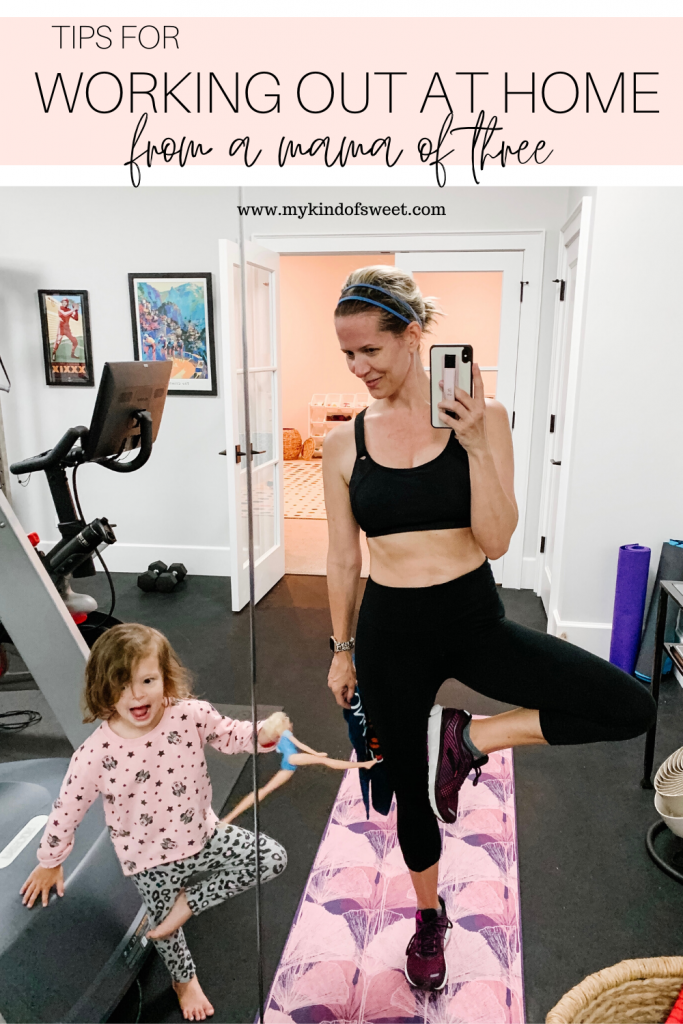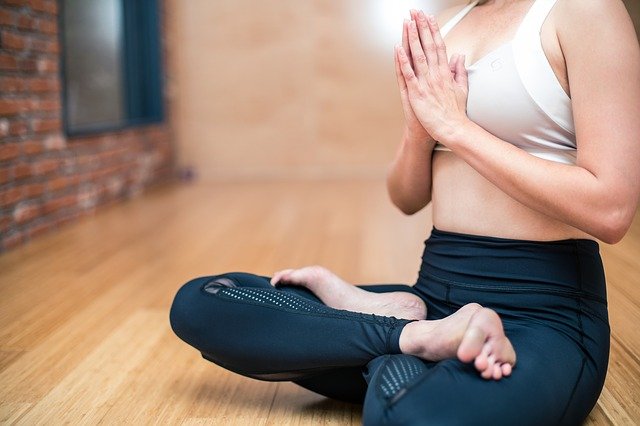
Your body needs to rest after a workout. During this time, the fibroblasts in your muscle cells are active and repair the damages caused by the exercise. It is crucial that your muscles have time to heal. Also, it is crucial not to use too much muscle tissue you just sculpted. You should complete as many tasks in your downtime as possible. This includes eating, relaxing and sleeping.
It is important to pay attention how your body reacts after a workout. Are you experiencing muscle soreness lasting more than three to four days? This is a sign you should increase your workout recovery. As you get stronger and lose more body fat, you'll need to adjust your recovery strategy. Your ideal workout recovery strategy may change over time. It might be different for you every week, month, or year. Here are some tips to optimize your recovery.

Anyone can benefit from a proper post-workout program. It will vary for different types or ages. For younger children, teens and adults, it may take longer to recover after exercise than for fit people. Additionally, people who are new to exercising or are not in good condition may need longer recovery times after working out. A person who is fit needs more time to recover from an injury than someone who's in good shape.
Proper warm-up, mobility and stretching are essential to a proper post-workout program. Getting your heart rate down to a resting level is essential to speed up the recovery process. It will also bring blood to your muscles. Some of the best ways to achieve this are by doing static stretching, yoga, or foam rolling. Epsom salt baths are another great option for those who feel tired after a hard workout.
The right type of recovery should be the focus of a post-workout program. Your body will not cramp if you ensure you are getting enough protein and calories. This can also help your muscles recover. Take a quick break from your workout to eat a healthy lunch. This will maximize the workout's benefits. A healthy meal can replenish your energy levels and help you prepare for the next exercise.

Good post-workout recovery should not only involve light exercise, but also include a good diet. You should get as much vitamin D and protein as you can. To do this, it is important that you don't work the same muscle groups twice. It's also important to take time for stretches and yoga. You should not make your muscles work harder than they already are during these days.
FAQ
Does being cold give you a weak immune system?
According to some, there are two types: people who love winter or those who hate it. You may wonder why you feel so bad when it's cold, regardless of whether you love it or hate it.
Our bodies were designed to work best in warm climates. We evolved to thrive in hot environments because of the abundance of food resources.
We live in a very different environment than our ancestors. We spend more time indoors and are often exposed to extreme temperatures (cold or heat) and eat processed foods rather than fresh.
Our bodies don't have the ability to tolerate extremes. This means that we feel tired, sluggish and even sick when we venture outside.
There are ways to combat these effects though. Staying hydrated is one way to combat this. If you drink plenty of water, you'll help keep your body properly hydrated and flush toxins from your system.
Another important step is to ensure that you're eating healthy meals. Consuming healthy food helps maintain your body's optimal temperature. This is particularly helpful for anyone who spends long periods of time inside.
Take a few minutes every morning to meditate. Meditation helps to calm your mind and body which can make it easier to deal stress and illness.
What is the most healthful lifestyle?
Living a healthy lifestyle is one that encourages you to eat well, exercise regularly, get enough sleep, and avoids stress. You will live a long and happy life if you adhere to these guidelines.
Small changes to your diet or exercise routine can help you start losing weight. Try walking for 30 minutes each day to lose weight. For more activity, you can try swimming or dancing. An online fitness program such as Strava or Fitbit that tracks your activity could be a good option.
What should you eat?
Consume lots of fruits, vegetables. These fruits and vegetables are high in vitamins, minerals, which can help you keep your immune systems strong. Fruits and veggies are also high in fiber, which makes them filling and helps with digestion. Include at least five portions of fruit and vegetables per day.
Drink plenty of water. Water flushes out toxins and helps you feel full between meals. Drink about eight glasses each day.
Choose whole grains over refined grains. Whole grains retain all nutrients including B vitamins, iron and zinc as well as calcium, magnesium, calcium, protein, and magnesium. Refined grain has lost some of its nutrition.
Avoid sugary drinks. Sugary drinks are high in empty calories and can lead to obesity. Instead, drink water, milk, or unsweetened Tea.
Avoid fast food. Fast food has very little nutritional value. You won't get the energy you need to function well, despite how delicious it may be. Instead, stick to healthier options such salads and soups as well sandwiches and pasta.
Limit your alcohol intake. You can reduce your intake of alcohol by limiting the amount of empty calories. Limit your consumption to no more than 2 alcoholic beverages per week
Reduce your consumption of red meat. Red meats can be high in cholesterol and saturated fat. You should choose lean cuts like beef, pork lamb, chicken and fish instead.
Do I have to count calories?
You might be asking "What is the best diet?" or "is counting calories necessary?" The answer is dependent on several factors like your current health status, personal goals, your lifestyle, and your preferences.
The Best Diet for Me - Which One is Right For You?
My personal health, goals and preferences as well as my lifestyle determine which diet is best for me. There are many diets available, some good and others not so good. Some diets work well for some people and others do not. What should I do then? What can I do to make the right decision?
These are the questions that this article attempts to answer. It starts with a brief introduction of the different types of diets available today. After that, you will learn about the pros and disadvantages of each type. The final step is to determine which one is right for you.
Let's start by taking a look at the various types of diets.
Diet Types
There are three types of diets available: ketogenic, high-protein, and low fat. Let's briefly discuss them below.
Low Fat Diets
A low-fat diet reduces the amount of fats you eat. This is accomplished by decreasing the intake of saturated fats such as butter and cream cheese. You can replace them with unsaturated oils (olive oil and avocados) For those looking to lose weight quickly, a low-fat diet is often recommended. This diet can cause constipation, heartburn, and stomach problems. If a person doesn’t receive enough vitamins from their foods, this can lead to vitamin deficiency.
High Protein Diets
High protein diets discourage carbohydrates and encourage the use of proteins. These diets have higher protein levels than other diets. These diets are intended to increase muscle mass and reduce calories. Unfortunately, they can't provide adequate nutrition for those who eat regularly. They may also be too restrictive and not suitable for everyone.
Ketogenic Diets
The keto diet is also known as the keto diet. They are high fat and moderately carbohydrate and protein-rich. They are typically used by athletes and bodybuilders because they allow them to train harder and longer without getting tired. But, they require strict adherence to avoid negative side effects like nausea, headaches, and fatigue.
How do I get enough vitamins?
You can get most of the daily nutrients you need through your diet. Supplements are an option if you are low in any vitamin. You can purchase a multivitamin that includes all of the vitamins you need. You can also purchase individual vitamins at your local drugstore.
Talk to your doctor if you have concerns about your nutritional intake. For example, dark green leafy vegetables such as spinach, broccoli, kale, collard greens, turnip greens, mustard greens, bok choy, romaine lettuce, arugula, and Swiss chard are rich in vitamins K and E. Other good sources include oranges, tomatoes, strawberries, cantaloupe, carrots, sweet potatoes, pumpkin, and squash.
If you are not sure how much vitamin you should be consuming, ask your doctor. He or she will recommend the appropriate dosage based on your medical history and current health status.
How much should my body weight be for my height? BMI calculator and chart
Use a BMI calculator to determine how much weight is needed to lose. The range of a healthy BMI is between 18.5- 24.9. To lose weight, you should aim for a loss of 10 pounds per year. Enter your height and weight to calculate your BMI.
This BMI chart will help you determine if your body is overweight or obese.
Statistics
- Extra virgin olive oil may benefit heart health, as people who consume it have a lower risk for dying from heart attacks and strokes according to some evidence (57Trusted Source (healthline.com)
- In both adults and children, the intake of free sugars should be reduced to less than 10% of total energy intake. (who.int)
- The Dietary Guidelines for Americans recommend keeping added sugar intake below 10% of your daily calorie intake, while the World Health Organization recommends slashing added sugars to 5% or less of your daily calories for optimal health (59Trusted (healthline.com)
- This article received 11 testimonials and 86% of readers who voted found it helpful, earning it our reader-approved status. (wikihow.com)
External Links
How To
How to Keep Your Body Healthful
This project had the main purpose of providing suggestions for how to maintain your health. Understanding what you need to do to keep your health in good shape is the first step to maintaining your health. This meant that we had to determine what is healthy for our bodies. After looking at the various methods people use to improve their overall health, we realized that there were many that could help. Finally, we came to some suggestions that would allow us to stay happier and healthier.
We started off by looking at the different types of food that we eat. Some foods are unhealthy and others are healthy. For example, we know that sugar is very unhealthy because it causes weight gain. However, vegetables and fruits are good for us as they have vitamins and minerals that our bodies need.
Next, we looked at exercise. Exercise improves the strength and energy of our bodies. Exercise can also make us happy. There are many activities that you can do. There are many exercises that you can do, including running, swimming or dancing. You can also lift weights and play sports. Yoga is another way we can increase our strength. Yoga can be a great exercise as it increases flexibility, improves breathing and is an excellent way to increase strength. Avoid junk food and drink plenty water if you want to lose weight.
Last but not least, we discussed sleep. Sleep is one the most important things we do each day. We become tired and stressed if we don't get enough rest. This can lead to headaches, back pain and other health problems, such as depression, heart disease, diabetes, heart disease, and obesity. So, if we want to stay healthy, we must ensure that we get enough sleep.